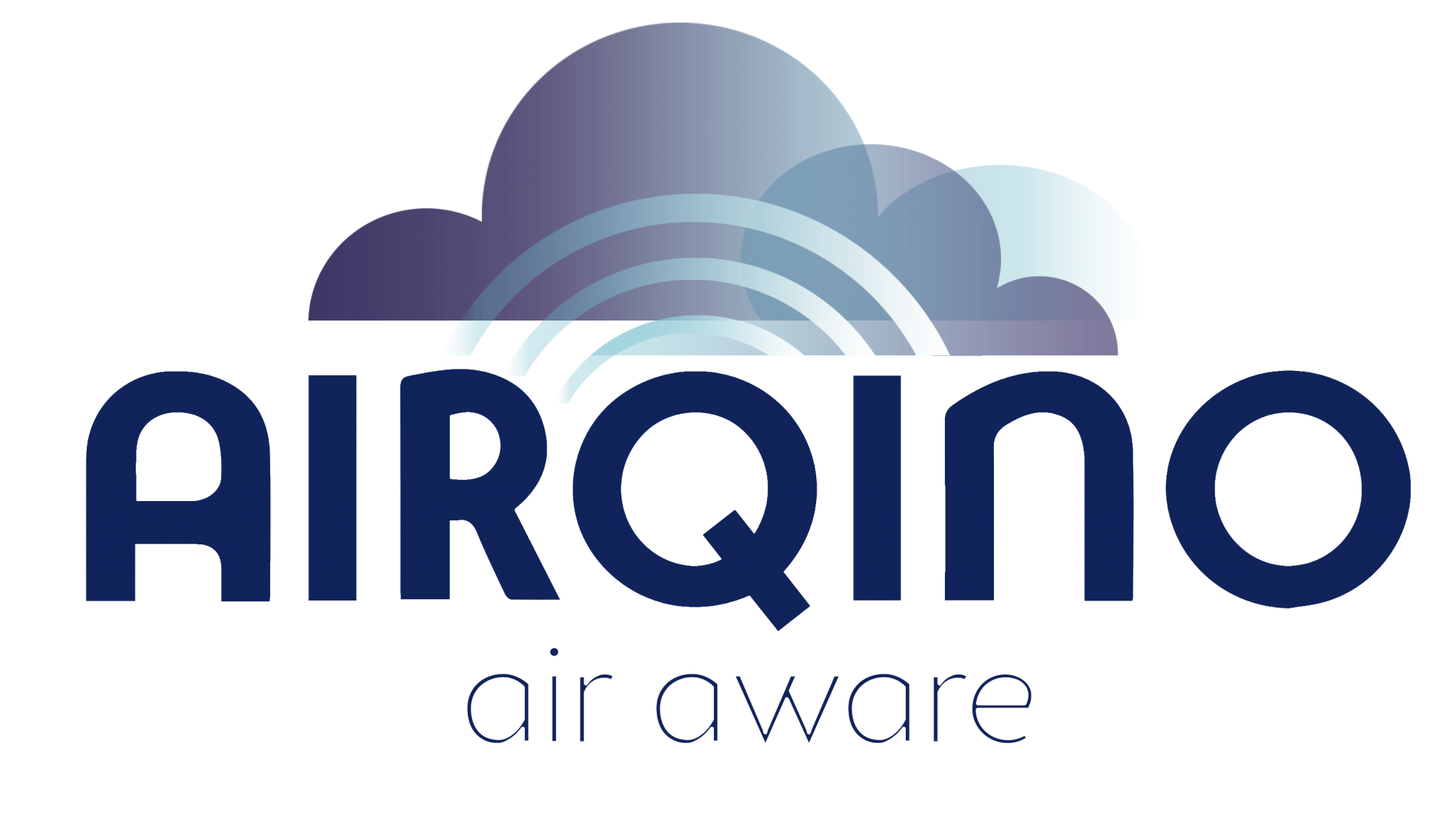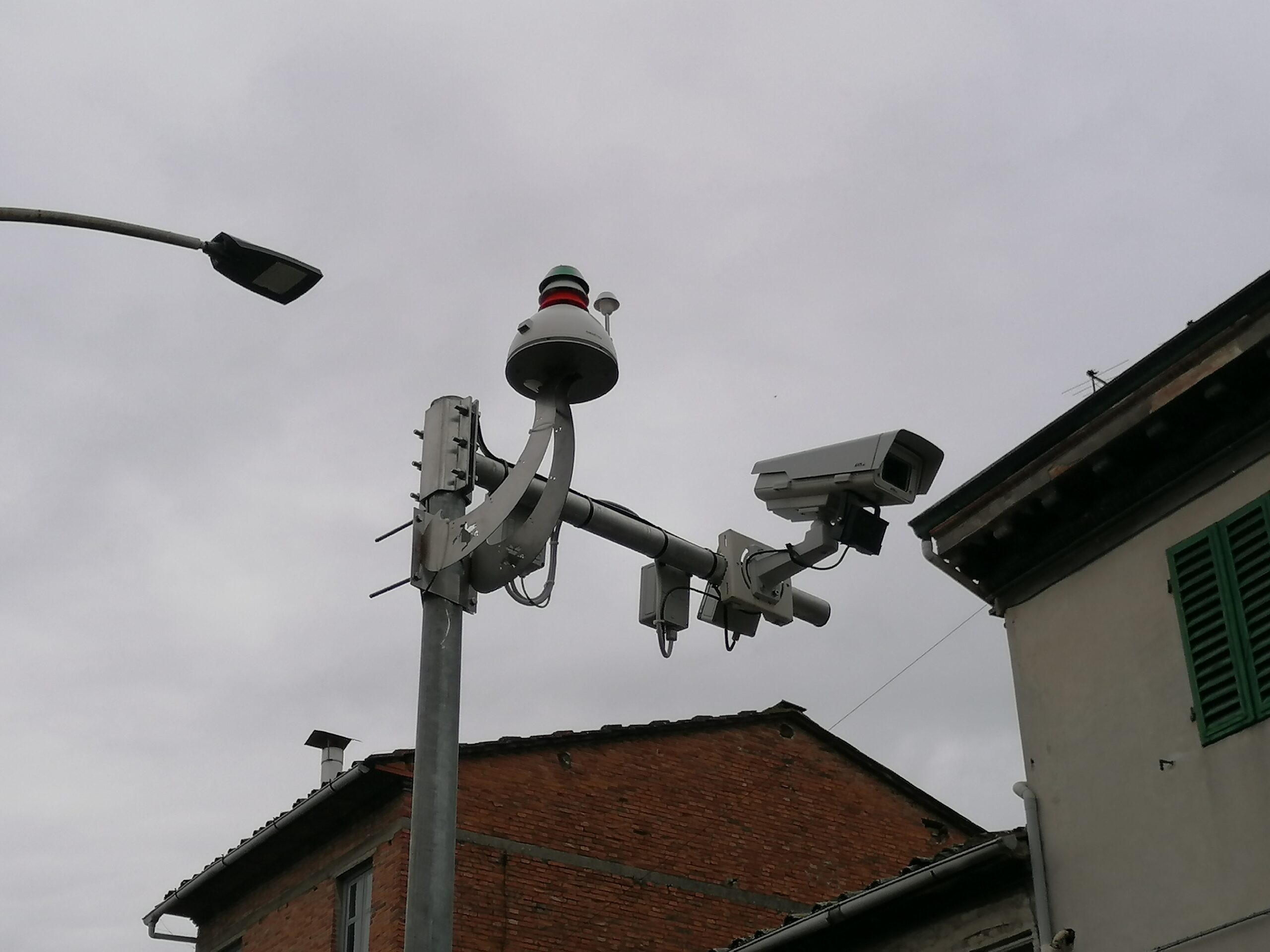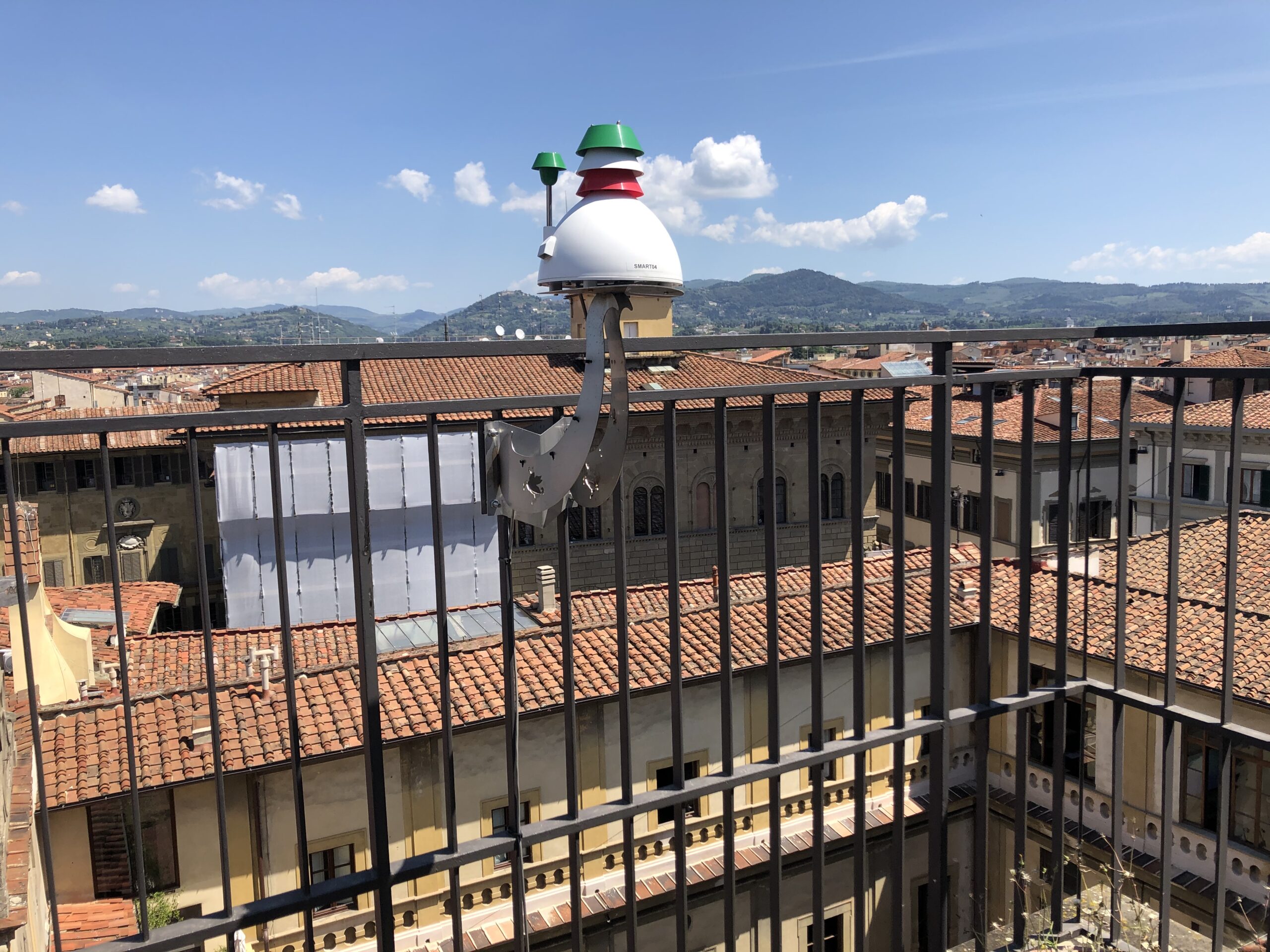AirQino Outdoor is a high precision environmental monitoring system: A cost-effective solution designed to detect, store and analyze data about the most important air pollutants and chemical compounds present in the atmosphere.
AirQino is a modular system and can be deployed to target specific hotspots or cover extensive areas, establishing complex multi-node networks.
The system detects meteorological conditions, temperature, relative humidity and monitors the concentration of dangerous pollutants and chemical compounds such as NO2, CO, O3, Total V.O.C, PM2.5 and PM10 and more.
Data are transmitted in real time to the cloud and can be analyzed via a dedicated web platform.
SENSORS
Temperature monitoring is essential in the identification and mitigation of urban heat islands.
All emissions are not equal because of different weather patterns. Relative humidity is often used as benchmark as it influences the volatility of fine particles.
Particulate Matter can be made up to hundreds of different chemicals. Some are produced directly from sources such as construction sites, unpaved roads, fields, smokestacks, or fires. Most particles form in the atmosphere, as a result of complex chemicals reactions involving sulfur dioxide and nitrogen oxides, pollutants released by power plants, industries and automobiles.
Carbon dioxide enters the atmosphere through the combustion of fossil fuels (coal, natural gas, and oil), solid waste, trees and other biological materials, and also as a result of certain chemical reactions (e.g., manufacture of cement). CO2 is the primary greenhouse gas emitted through human activities and is at the root of climate change issues.
Noise pollution refers to all those interference noises that represent a danger to health, ecosystems and monumental assets or alter the normal state of an environment.
Nitrogen Dioxide primarily gets in the air from the burning of fuel. NO2 forms from emissions from cars, trucks and buses, power plants, and off-road equipment.
Ground-level Ozone triggers a variety of health problems, particularly for children, the elderly, and people with respiratory diseases. Elevated exposures to ozone can also affect sensitive ecosystems, and can be extremely harmful to vegetation, especially during the growing season.
Carbon dioxide enters the atmosphere through the combustion of fossil fuels (coal, natural gas, and oil), solid waste, trees and other biological materials, and also as a result of certain chemical reactions (e.g., manufacture of cement). CO2 is the primary greenhouse gas emitted through human activities and is at the root of climate change issues.
The term Volatile Organic Compounds refers to a complex mixture of low-level volatile organic compounds. Chemical properties of TVOCs vary widely. Evidence shows that the concentration of TVOCs is consistently higher in indoor spaces than outdoors (up to 10x). TVOC monitoring is therefore especially sensitive in hospitals, office spaces, laboratories, schools and high-traffic buildings.
Nitrogen Oxides (NOX) is a group of highly reactive gases, which includes NO2, nitrous acid and nitric acid. This kit is dedicated to the monitoring of vehicular traffic.
Hydrochloric acid is used as a laboratory reagent and in a variety of industrial processes such as metal refining, electroplating, cleaning boilers, neutralizing chemically basic systems, manufacturing fertilizers, dyes, textiles and rubber, and food products.
Chlorine is widely used in laboratories and in the manufacture of many products (paper products, food, insecticides, paints, plastics, medicines, textiles, solvents and many others). Chlorine causes environmental harm at very low levels and is especially harmful to organisms living in water and in soil. Effects of chlorine on human health are also well documented and connected to human respiratory diseases.
Sulfur dioxide can affect both health and the environment. The largest source of SO2 in the atmosphere is the burning of fossil fuels by power plants and other industrial facilities and harbors.
Most hydrogen sulfide present in the air comes from natural sources: Human and animal wastes, volcanoes, hot springs and underwater thermal vents. Industrial activities that can produce the gas include petroleum/natural gas drilling and refining, wastewater treatment, coke ovens, tanneries, and kraft paper mills.
Chemical ammonia is a byproduct of agricultural and industrial activities. Agriculture (livestock waste and artificial fertilizers) accounts for about 70% of global total emissions. Biomass combustion also releases ammonia, and, to a lesser extent, industrial processes and vehicular traffic.
Time and Geo-localization.
Data trasmission
Data Exit.
• Power supply: 12Vdc
• Weight 980 gr / 34.6 oz
• Dimensions 200x194 mm
• Electricity Consumption: 2W
• IP 65
• Support bracket
• Data-logger
• Solar panel module
• Power supply unit
APPLICATIONS
Smart cities incorporate environmental sensor technology into their networks in order to better understand air pollution and its impact on people, the environment and the cultural heritage.
Urban areas often feature several air pollution hotspots. These are typically the result of human activities, heating systems, traffic, heat islands and industrial areas.
AirQino can be installed on the perimeter of an industrial plant, a refinery or a port area. As a continuous monitoring system, it allows to supervise the general state of air quality and to detect potential gas leaks.
Construction and demolition sites require an attentive monitoring activity to supervise the cointainment of dangerous polluting substances, primarily nitrogen dioxide (NO2) and particulate matter (PM).
Evidence shows that sustainability represents a competitive advantage in a modern territorial marketing strategy
An environmental monitoring system can be used during a Strategic Environmental Assessment (SEA) to study the environmental impact of territorial planning and development initiatives.
Data collected by AirQino stations make it possible to develop air quality forecast models and support urban planning interventions or revisions to the local zoning plan.
SERVICES
Configuration and Calibration
Monitoring stations can be configured with a wide set of sensors, calibrated by CNR® using EU reference stations (ARPA).
Installation and setup support
Our team will support you in the definition of the monitoring network, and assist throughout the installation process.
Data Reporting and Analysis
AirQino Web platform provides in-depth data reporting and analysis tools. Custom reports and bulletins available upon request.
Ongoing Maintenance
Our team provides ongoing technical support and offers scheduled maintenance services and sensors review.
SOLUTIONS
Plug and Play
Develop an air quality monitoring network with AirQino ecosystem and benefit from our full-service capabilities.
Open System
Integrate AirQino in your IoT system and benefit from the modularity of our offer.
FAQs
AirQino stations are modular and highly configurable. Some standard configurations include: AirQino Base, AirQino Vehicular Traffic, AirQino Industrial Areas. Monitoring stations can also be customized with a wide range of sensor sets to accomodate specific requirements.
The sensor calibration process is performed over a period of 15 days during which AirQino stations are positioned in proximity of a reference EU station (ARPA Italy) and subsequently validated by the Bioeconomy Institute of the CNR of Florence.
A periodic review of the sensors calibration is suggested to maintain high performance standards. Suggested frequency may vary depending on the specific application.
In selected cases, calibration may be performed remotely.
AirQino monitoring stations can be easily installed on buildings, rooftops, canopies, lighting poles, telematic gates and traffic lights. We recommend positioning the units at minimum height of 3 meters. For fixed stations, access to a low voltage electrical connection is required.
Our team of experts provides dedicated assistance throughout the installation process and can support in the definition of monitoring network.
AirQino stations feature an integrated GPRS communication system that transmits data in real time, with a frequency of 2 minutes. Upon request, devices can be configured with alternative communication systems: RS 232, Ethernet, for integration with Industry 4.0 SCADA systems.
AirQino Web is a platform dedicated to the visualization of real time data and historical analysis.
The platform can be used to disseminate data to the public, or protected to allow private monitoring.
Upon request we are proud to offer detailed, custom reporting services.
Bulletins and detailed reports, studies and environmental assessments elaborated on the base of the data collected by AirQino systems.
The documentation is officially produced by the Italian National Research Council (Bioeconomia Firenze) thanks to the official collaboration with Tea Group.
AIRQINO® PROJECTS



Contact us
- Quanta S.R.L. Via A. Ferrarin, 19-23 50145 Firenze – Italy
- + (39) 055 3024555
- airqino@quantasrl.com








